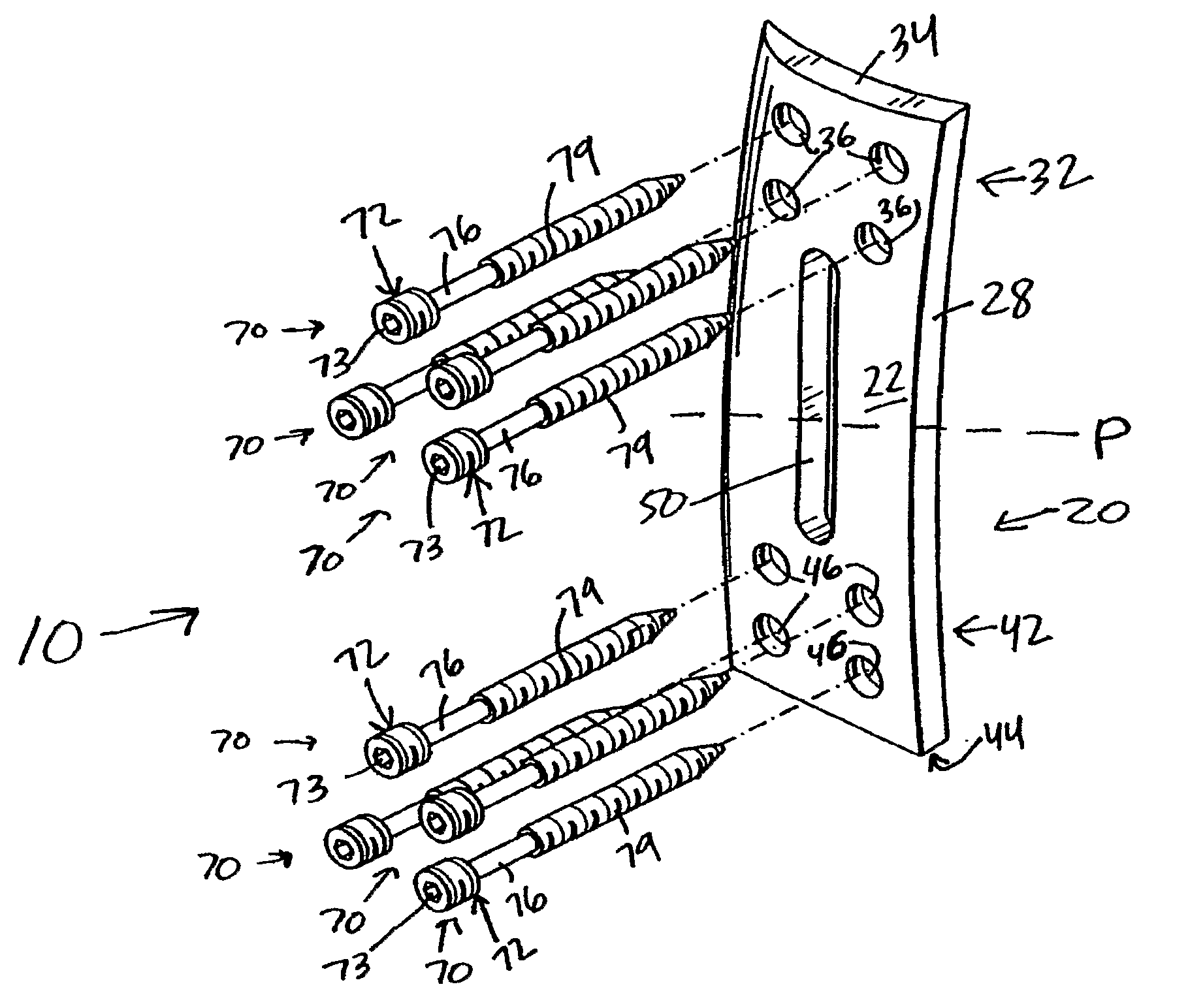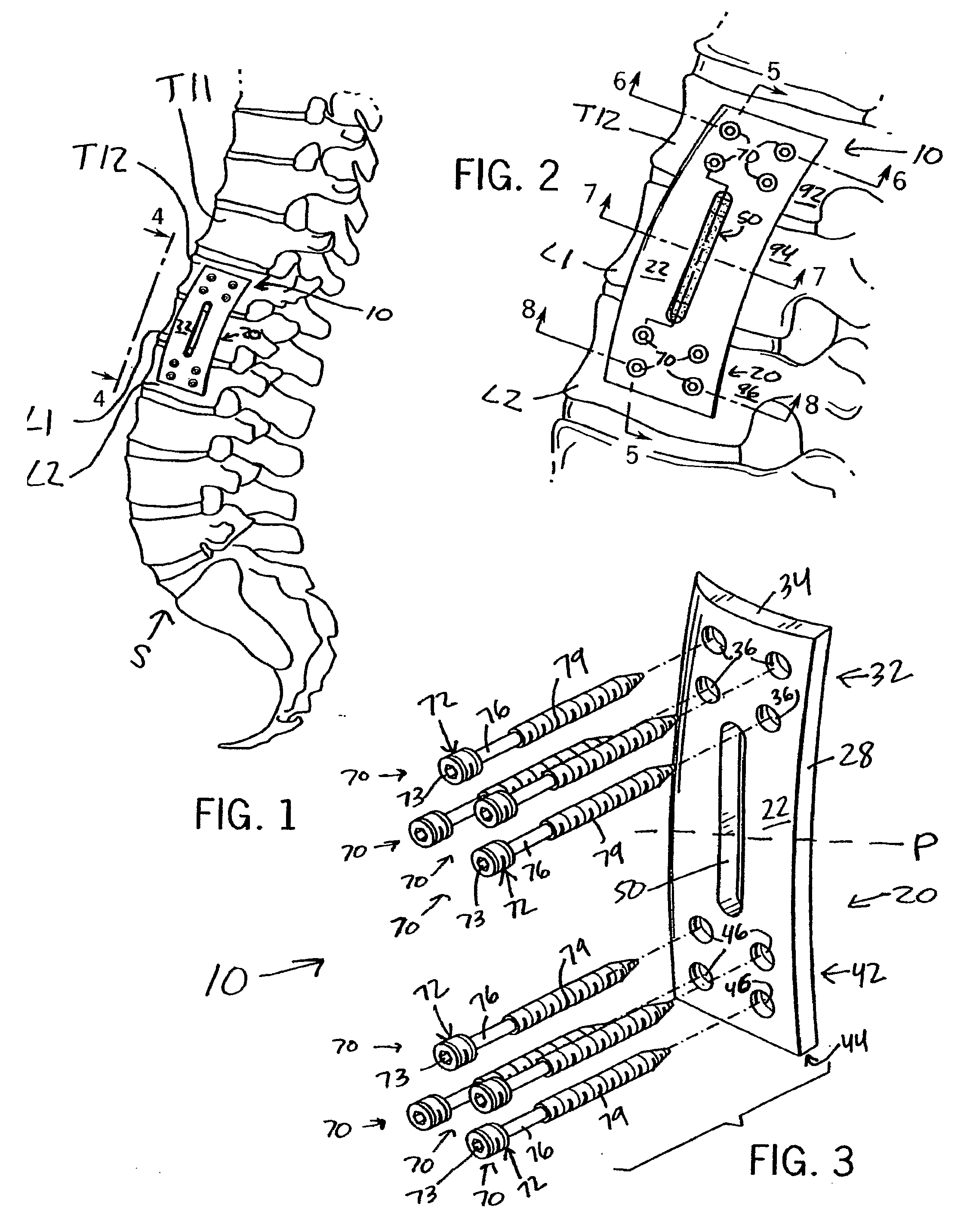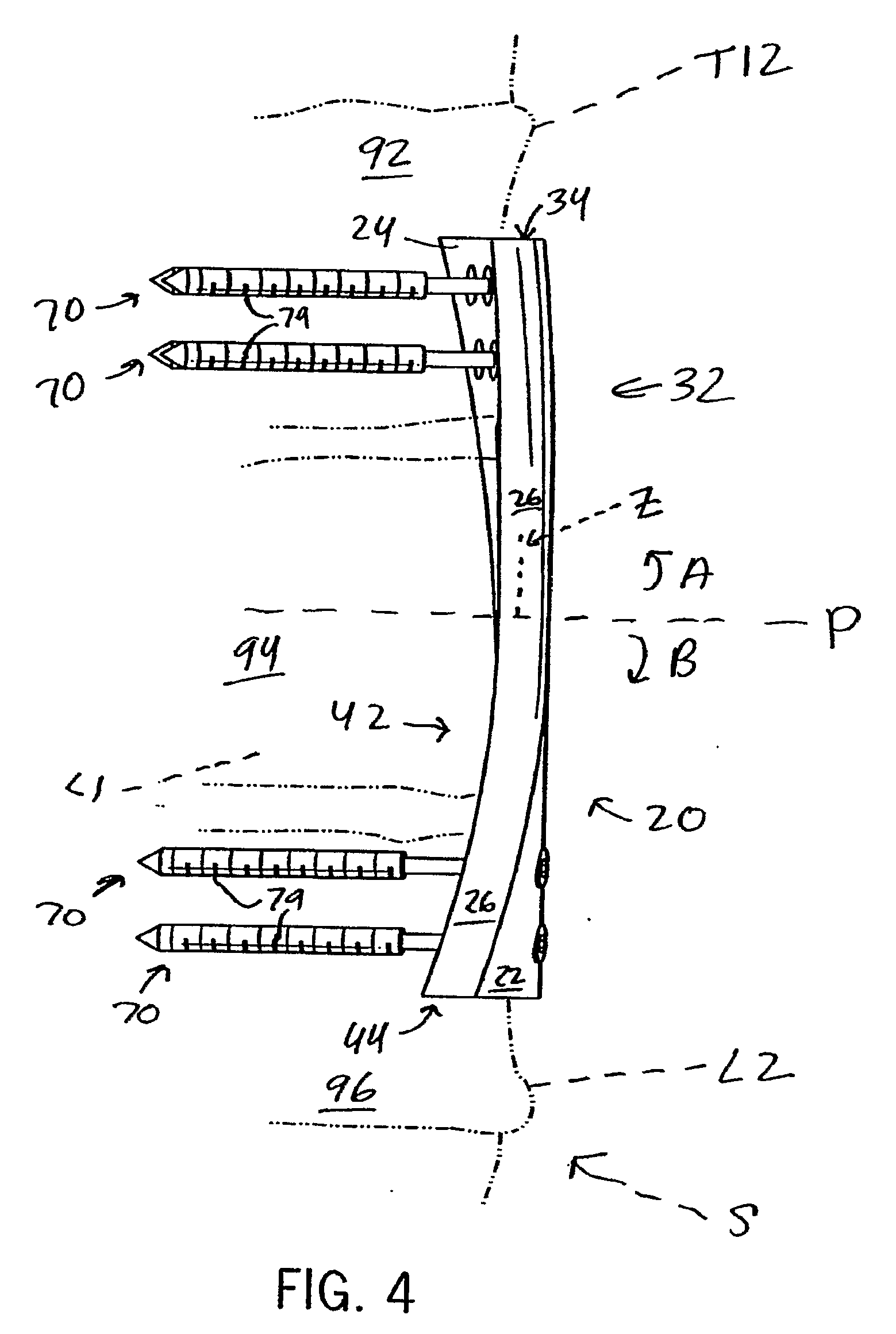Anterior Adherent Thoracolumbar Spine Plate
- Summary
- Abstract
- Description
- Claims
- Application Information
AI Technical Summary
Benefits of technology
Problems solved by technology
Method used
Image
Examples
Embodiment Construction
[0033]The present invention provides an anterior thoracolumbar fixation device designed to stabilize the traumatized or reconstructed thoracolumbar spine. Looking at FIGS. 1-8, the anterior thoracolumbar fixation device 10 includes an elongated generally rectangular plate 20. The plate 20 may be formed (such as by casting or machining) from a metal or metal alloy such as tantalum, tantalum alloys, titanium, titanium alloys (e.g., titanium-6-aluminum-4-vanadium), cobalt alloys, stainless steel alloys, or from a nonresorbable ceramic such as aluminum oxide or zirconia; or from a nonresorbable polymeric material such as polyethylene; or from a nonresorbable composite material such as a carbon fiber-reinforced polymer (e.g., polysulfone). The level of stabilization required may dictate the choice of material.
[0034]The plate 20 includes a generally rectangular outer surface 22, a curved and concave generally rectangular inner surface 24 opposite the outer surface 22, a first side surface...
PUM
 Login to View More
Login to View More Abstract
Description
Claims
Application Information
 Login to View More
Login to View More - R&D
- Intellectual Property
- Life Sciences
- Materials
- Tech Scout
- Unparalleled Data Quality
- Higher Quality Content
- 60% Fewer Hallucinations
Browse by: Latest US Patents, China's latest patents, Technical Efficacy Thesaurus, Application Domain, Technology Topic, Popular Technical Reports.
© 2025 PatSnap. All rights reserved.Legal|Privacy policy|Modern Slavery Act Transparency Statement|Sitemap|About US| Contact US: help@patsnap.com



